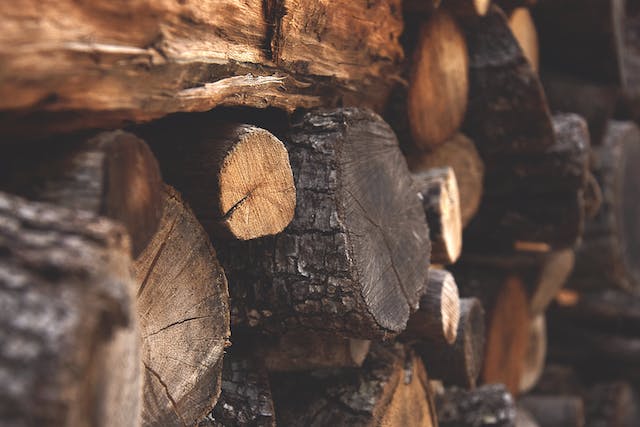Termites have a knack for silently munching away at your property’s integrity. But to fortify your defenses, you need to understand what makes termites tick.
What attracts termites indoors and outside?
This guide explores the underlying factors that attract termites to your property. We will delve into the subtleties, from the allure of moisture to the culinary attraction of wood, to reveal the hidden elements that make your home appealing to these discreet intruders.
What Attracts Termites?
Wooden structures in and around your home can inadvertently beckon termites. Exploring the factors that pique their interest can help you protect your home effectively.

Wood Piles
Often conveniently situated near homes, wood piles are what attracts termites to spread their reach indoors. These collections of firewood or untreated lumber offer termites a readily available and abundant source of cellulose, akin to an all-you-can-eat buffet.
Over time, these insects may consume the wood within the pile, and if left unattended, termites might extend their foraging from the woodpile to your home. To counter this risk, store firewood and lumber at a considerable distance from your residence elevated above the ground.
Take a look at this guide for step-by-step instructions on how to build outdoor wood storage.
Your House’s Wooden Components
What attracts termites in your home? Termites primarily target the wooden components of your house, such as beams, joists, and siding. If left unattended, termite infestations can inflict substantial damage on these crucial elements, potentially compromising the safety and stability of your residence.
Vigilantly monitoring the condition of your home’s wooden framework is essential, as termites can often operate undetected until they have already caused extensive damage.
Signs of termite presence may include hollowed wood, subtle mud tubes along the surface, or the emergence of swarms of winged termites, also known as alates, around your property. Early identification of these signs is pivotal, as taking prompt action can prevent a minor termite issue from developing into a significant and costly problem.
Mulch: A Hidden Moisture Magnet
Mulch, a widely embraced landscaping choice known for its aesthetic appeal and soil-enriching qualities, can, on occasion, be what attracts termites to your property. While termites may not predominantly feast on the mulch itself, they can exploit its proximity to your home’s foundation as a means to infiltrate.
To diminish the likelihood of termites being drawn to your mulch, consider opting for termite-resistant mulch varieties. These alternatives maintain the visual and soil-enhancing benefits of mulch while being less appealing to termites.
Additionally, it’s advisable to position the mulch at a significant distance from your home’s foundation. This strategic placement creates a deterrent for termites trying to bridge the gap between your garden and your house, thereby reducing the risk of an infestation.
Open Wooden Structures in Basements and Crawlspaces
Basements and crawlspaces often feature exposed wooden structures, which can be particularly appealing to termites. These areas are typically dark, damp, and secluded, making them prime locations for termites to establish colonies.
To minimize the attraction of these areas to termites, properly ventilate your home and address any moisture-related issues. An effective long-term solution is encapsulating these spaces with moisture barriers. This reduces moisture levels and makes it challenging for termites to infest these regions.
Wooden Decks and Porches
Wooden decks and porches, integral components of many homes, are particularly susceptible to termite infestations because of their outdoor exposure, as their cellulose-rich content is what attracts termites. These outdoor wooden structures, while providing valuable living and entertainment space, are constantly exposed to the elements, which can weaken the wood and make it more appealing to termites.
Termites are resourceful pests that can infiltrate the support beams, framework, and even the deck or porch itself. They often access these areas through small cracks, gaps, or weakened wood caused by weathering, which might not be immediately visible to homeowners.
Moreover, the shaded and often humid environments beneath these structures can provide an ideal shelter for termites, as they are drawn to moisture-rich locations. As a result, the substructure of your deck or porch can become a hidden haven for these pests.
The Necessity of Regular Inspections
Knowing what attracts termites can help, but regular property inspections by qualified pest control professionals are the cornerstone of effective termite prevention. These inspections play a pivotal role in spotting early signs of termite activity, nipping minor problems in the bud before they escalate into significant structural damage.
Vigilance is vital in termite prevention, and periodic inspections continuously monitor termite-related issues. Early detection allows for swift and cost-effective solutions, like catching a medical condition in its initial stages.
Moreover, these inspections are reactive and proactive, identifying conditions conducive to termite activity and addressing them to create an environment less attractive to termites. By partnering with a professional pest control company like proof. Pest Control, you’re investing in the long-term health of your home, safeguarding it from costly and destructive termite damage.
Contact us today to schedule your termite treatment!

